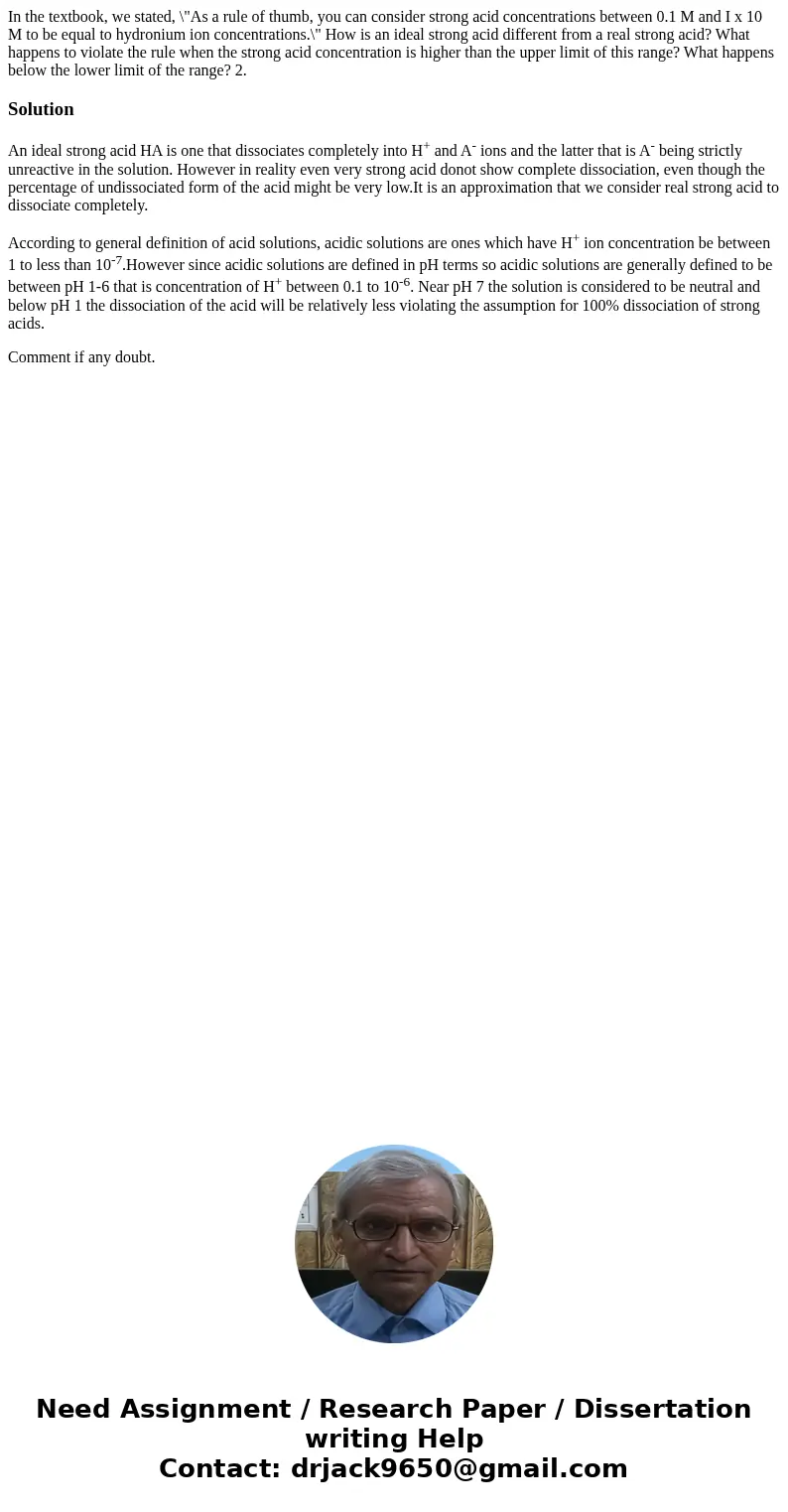In the textbook we stated As a rule of thumb you can conside
Solution
An ideal strong acid HA is one that dissociates completely into H+ and A- ions and the latter that is A- being strictly unreactive in the solution. However in reality even very strong acid donot show complete dissociation, even though the percentage of undissociated form of the acid might be very low.It is an approximation that we consider real strong acid to dissociate completely.
According to general definition of acid solutions, acidic solutions are ones which have H+ ion concentration be between 1 to less than 10-7.However since acidic solutions are defined in pH terms so acidic solutions are generally defined to be between pH 1-6 that is concentration of H+ between 0.1 to 10-6. Near pH 7 the solution is considered to be neutral and below pH 1 the dissociation of the acid will be relatively less violating the assumption for 100% dissociation of strong acids.
Comment if any doubt.

 Homework Sourse
Homework Sourse